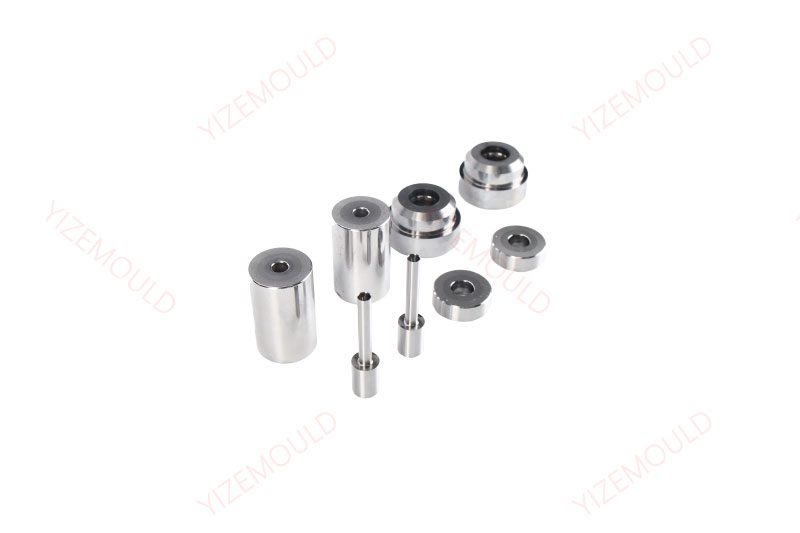What carbide should use?
Carbides, also known as hard metals, are highly important materials commonly used for manufacturing cutting tools and wear-resistant components. They combine high-hardness carbide particles with a tough metal matrix to […]
Carbides, also known as hard metals, are highly important materials commonly used for manufacturing cutting tools and wear-resistant components. They combine high-hardness carbide particles with a tough metal matrix to provide excellent wear resistance and cutting ability, making them widely applicable.
Tungsten cobalt carbides.
Tungsten cobalt carbides (WC-Co, ISO P) series are among the most commonly used tungsten cobalt carbides. This alloy is primarily composed of tungsten carbide (WC) particles bonded with cobalt (Co) as a binder. It has a room temperature hardness of 89 to 91 HRA and exhibits heat resistance up to 800 to 900°C. Tungsten cobalt carbides offer good bending strength and impact toughness, making them suitable for cutting brittle materials as well as processing non-ferrous metals and non-metallic materials. They possess high hardness and wear resistance, making them applicable for manufacturing molds and cutting tools such as stamping die parts, extrusion dies, drills, milling cutters, and turning tools.
Our factory business: carbide parts, mold parts, medical injection molds, precision injection molds, teflon PFA injection molding, PFA tube fittings. email: [email protected],whatsapp:+8613302615729.

Tungsten titanium cobalt carbides.
Tungsten titanium cobalt carbides (WC-TiC-Co, ISO K) series are typical representatives of tungsten titanium cobalt carbides. They are similar to tungsten cobalt carbides but incorporate titanium carbide (TiC) to enhance the alloy’s high-temperature performance and improve the stability of cutting edges. This type of carbide contains 5% to 30% TiC. As TiC has higher hardness and melting point compared to WC, tungsten titanium cobalt carbides exhibit higher hardness, wear resistance, and heat resistance ranging from 900 to 1000°C. However, their bending strength and impact toughness are reduced. Tungsten titanium cobalt carbides are mainly suitable for processing plastic materials as steel and its alloys undergo significant plastic deformation during machining, resulting in higher cutting temperatures that require better heat resistance and wear resistance of the tool material. Increasing the TiC content improves wear resistance and heat resistance but reduces strength and increases brittleness. Lower TiC content grades are preferred for rough machining, while higher TiC content grades are preferred for finish machining. However, with the increased TiC content, the thermal conductivity of the alloy decreases, making it prone to cracking during welding and grinding. Therefore, special attention is required during usage. Tungsten titanium cobalt carbides are widely used in the manufacturing of cutting and planing tools.
Tungsten Titanium Tantalum (Niobium) Carbides.
Tungsten titanium tantalum (niobium) carbides (WC-TiTa, ISO M) series contain tungsten titanium carbide (W,Ta)C particles as the main component, offering high hardness and wear resistance. They are suitable not only for the manufacturing of cutting tools but also for wear-resistant parts such as drills, mining tools, and drilling tools. Tungsten titanium tantalum (niobium) carbides exhibit high hardness and wear resistance, making them suitable for machining hard and wear-resistant materials such as cast iron, alloy steel, quartz, and ceramics.
Other Carbides.
In addition to the aforementioned common types of carbides, there are some other special alloys such as tungsten molybdenum carbides (WC-Mo, ISO N) and tungsten iron carbides (WC-Fe, ISO S). Tungsten molybdenum carbides exhibit high hardness and wear resistance, making them suitable for processing hard and wear-resistant materials. Tungsten iron carbides possess high bending strength and impact toughness, making them suitable for cutting brittle materials.
How to choose carbides?
Choosing the appropriate carbide depends on the specific application requirements and working conditions. Here are some factors to consider when selecting carbides:
- Workpiece Material: Different carbides are suitable for processing different types of materials. Select the corresponding carbide type based on the hardness, toughness, and wear resistance of the workpiece material.
- Machining Operation: Choose suitable carbide tools or wear-resistant components based on the specific machining operations such as cutting, drilling, milling, etc. Consider factors such as cutting speed, feed rate, depth of cut, and cutting method.
- Working Conditions: Consider the temperature, pressure, and lubrication conditions of the working environment. Certain carbides have better heat resistance and corrosion resistance, making them suitable for high-temperature or corrosive working environments.
- Cost Factors: Different types of carbides have varying prices. Select an economically practical carbide based on the budget and performance requirements.
- Manufacturer Recommendations: It is advisable to refer to the recommendations and technical specifications provided by carbide manufacturers. They can offer more detailed guidance based on specific applications.
In conclusion, selecting the appropriate carbide requires considering multiple aspects such as material properties, machining requirements, working environment, and economic factors. If there are any doubtsor specific requirements, it is recommended to consult with carbide manufacturers or industry experts we can provide tailored recommendations based on your specific needs.
Related Posts
- Unveiling the Key Factors Affecting the Lifespan of Tungsten Carbide Bushings
- Tungsten Carbide Punch Maintenance Tips: The Essential Guide to Extending Lifespan
- Comprehensive Analysis of Tungsten Carbide Machining Advantages
- Key Considerations for Using Tungsten Carbide Parts: What You Need to Know!






